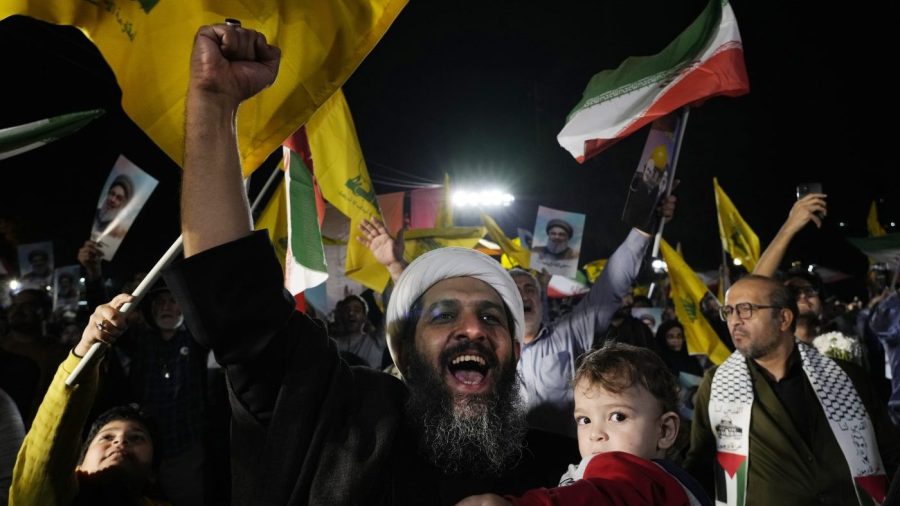
In an unprecedented attack, the Iranian Revolutionary Guard Corp and the Iranian army launched approximately 180 missiles at Israel. Iran claimed responsibility for targeting three air force bases and Mossad headquarters, in retaliation for the assassinations of Hezbollah leader Hassan Nasrallah, the new Islamic Republican Guard Corps commander in Syria-Lebanon, and senior Hamas leader Ismail Haniyeh.
While most of the missiles were intercepted through cooperation between Israel, the U.S. and Jordan, a few dozen managed to strike military and civilian targets, resulting in limited physical damage and minor loss of life.
We are now one step closer to a direct war between Israel and Iran, a conflict whose effects will ripple throughout the Middle East and beyond. Such a conflict would have potentially devastating consequences, both conventional and nuclear. Time is not on the region’s side, and every effort must be made to ensure that decisions on this matter are not made rashly.
Unlike the previous Iranian attack on Israel in April, the latest assault was executed more quickly, with relative surprise. It involved twice as many ballistic missiles. This escalation stemmed from the significant damage Israel delivered to the image of the “axis of resistance,” especially Iranian proxy Hezbollah, following criticism that Iran was abandoning its allies while not carrying its weight. Concerns in Tehran likely arose from how perceived weakness could affect internal stability, and the possibility of Israel further intensifying attacks against Hezbollah or targeting Iran directly.
Both sides seem intent on continuing to raise the stakes. Despite Iran warning that it would target Israeli civilian infrastructure in future attacks, decision-makers in Jerusalem are expected to authorize a more robust response than the one they launched in April. Previous Israeli efforts were misinterpreted and failed to deter a direct Iranian assault, and efforts to disrupt offensive support between “axis” members have moved to the fore. This could lead to a more forceful, overt and effective Israeli military action against Iran. The perception of Iran as the “octopus head” — the primary architect of a multi-front anti-Israel strategy — also motivates intensified action.
What’s on the table? Israel may target military installations, such as surface-to-surface missile bases or anti-aircraft systems, or Iran’s energy sector and political regime symbols. An attack on Iran’s nuclear facilities is being debated in Israel, but is not likely at the moment.
Factors being considered include the operational capability to execute such a strike effectively, the time that would be required to rebuild the facilities, expected regional reactions and the impact on Iran’s future decision to develop nuclear weapons. Additionally, the Biden administration’s opposition to attacking the nuclear sites is a consideration, particularly in view of the upcoming presidential election.
Recently, however, there has been a possible shift in the Israeli stance — evident, for instance, in a growing public discourse on the issue. The increased attention in Israel stems partly from the unprecedented advancement of the Iranian nuclear project, the overconfidence this gives Tehran and the intensifying internal Iranian calls to acquire nuclear weapons. An underlying cause for the shift is the absence of an international mechanism to control and monitor the program and the looming expiration of the “snapback” mechanism in October 2025, which would hinder a quick reinstatement of U.N. Security Council sanctions against Iran.
The significant weakening of Hezbollah and the reduced risk it poses to Israel in a future confrontation with Iran, coupled with the high costs Israel is already bearing in its fight against the “axis of resistance,” might be viewed by Israeli decision-makers as an opportunity to act. The trauma of Oct. 7 and the public’s increasing support for more aggressive responses against external attacks intensify belligerent Israeli sentiments towards Iran.
All eyes are now on Israel. Its response is likely to follow a military-regional logic aimed at preventing further direct attacks from Iran and isolating the various fronts of conflict. However, continued intense confrontations between the two countries, along with escalating attacks on Hezbollah, could further amplify the discourse in Tehran favoring a nuclear breakout and increase support in Jerusalem for striking the nuclear facilities. This would create a dangerous self-perpetuating cycle.
The history of the Middle East and beyond is being shaped right now. In the years to come, scholars will explore the crucial decisions facing leaders in Jerusalem, Tehran, Washington and elsewhere that today may seem like just another news update.
In the absence of effective communication channels between Israel and Iran, a thorough consultation process on both sides is now more crucial than ever. It is vital that diverse perspectives are considered both within these governments and in coordination with their partners. This is not a sign of weakness, but rather of responsibility and foresight, strengthening the credibility of any actions that are ultimately taken.
This lesson echoes the wisdom of the 1962 Cuban missile crisis, as described in literature years later, reminding us of President John F. Kennedy’s measured approach. He did not rush his decision, but sought advice, deliberated carefully and then acted with resolve. Let us hope that today’s leaders have studied that history.
Assaf Zoran is a research fellow with the Project on Managing the Atom and International Security Program at Harvard Kennedy School’s Belfer Center for Science and International Affairs.

